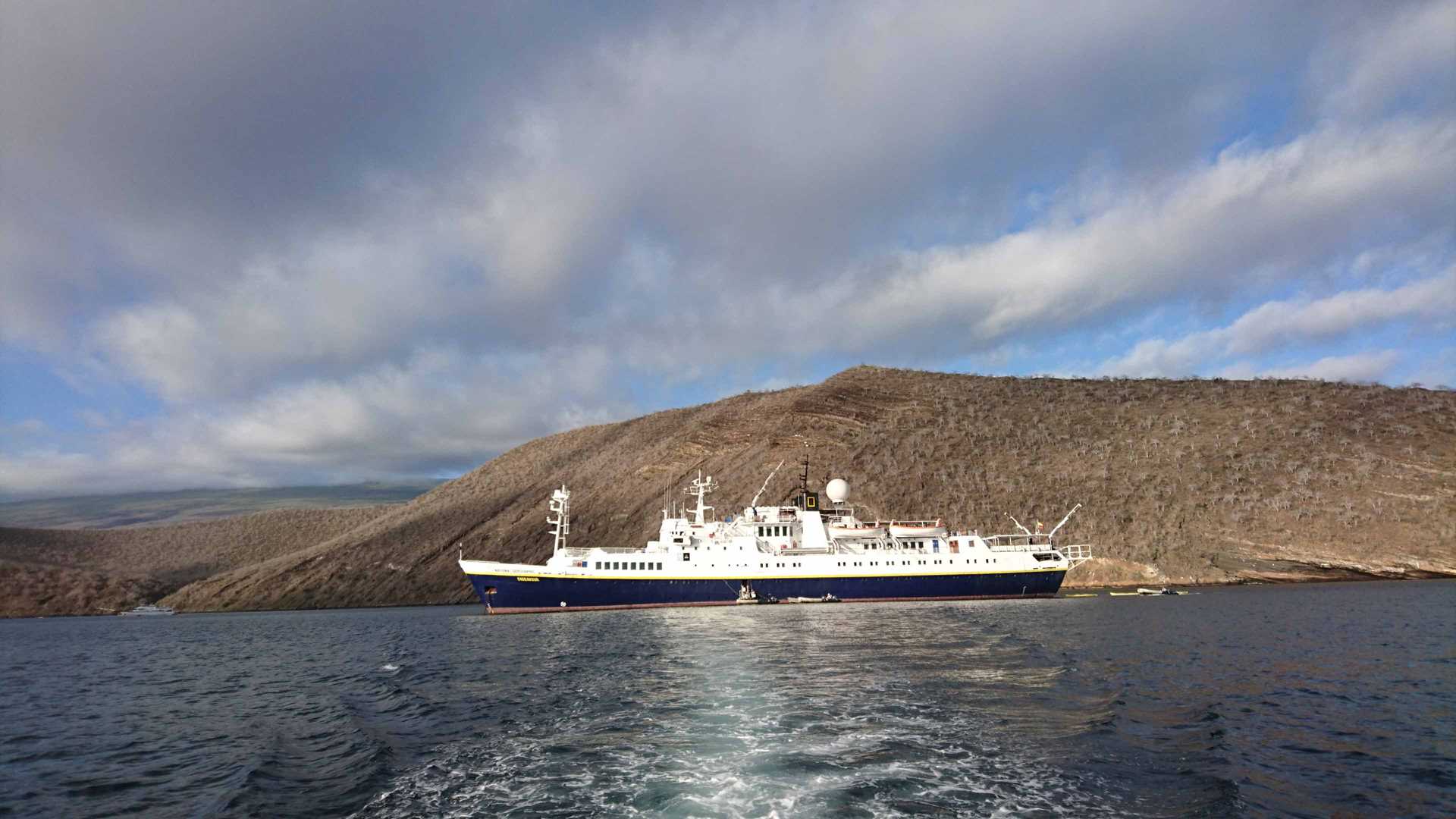Isabela is the largest island in Galapagos, and its shape is thought to resemble a sea horse. The spine of the sea horse is made up of a chain of six volcanoes, and it’s here that we spent the day. We had several activities throughout the day, the first one at a location called Urbina Bay, where our guests could chose between a short and long hike, both of which offer good opportunities of wildlife sightings, like large land iguanas and occasionally also giant tortoises.
Land birds are also everywhere here, from Darwin’s finches, Galapagos hawks, warblers and Galapagos mockingbirds to some waders and sea birds like the unique flightless cormorants and pelicans. Another interesting feature of the area is the 1954s uplift that caused the elevation of the marine bottom by twelve feet over an area of about five miles. During this occurrence, a great number of marine creatures like sea turtles, sea urchins, lobster, sharks and many others were left high and dry, and can be seen as you walk through the inland trail. A great area has large coral heads well a distance from the water, recently colonized by new vegetation of different sorts.
After a delicious Ecuadorian lunch and a mandatory siesta, we prepared for the afternoon activities at another location on Isabela called Tagus Cove, formerly visited by famous naturalist Charles Darwin. Some started early with a kayaking excursion along the shore of tuff formation, where we regularly spot sea birds like penguins and cormorants resting or nesting in the rocks.
This was followed by a snorkeling excursion off the Zodiacs along the coastline. The green sea turtles in this region are abundant and incredibly friendly, and the penguins come very close as they follow small schools of fish. The cormorants do the same, and sometimes are attracted to snorkels and other snorkeling gear—they are known to play with equipment, or even try to take it to include as part of their nest. This session in the water was just amazing.
After our water activities, the adventure continued. Some of us went on a power hike to a small elevation, from where you can see a salt water lake nestled in an old crater mostly made of ash, and surrounded by local vegetation. The water in this lake is twice as salty as the ocean! Others went on a Zodiac ride to look for the amazing animals that usually relax on the rocks and swim close the shore, where is possible to see and take pictures of them easily.
Behind us, the sun at the horizon announced the last warming ray of the day, one of those days that will stay in our memories for a long time. Another incredible day in the Galapagos.






